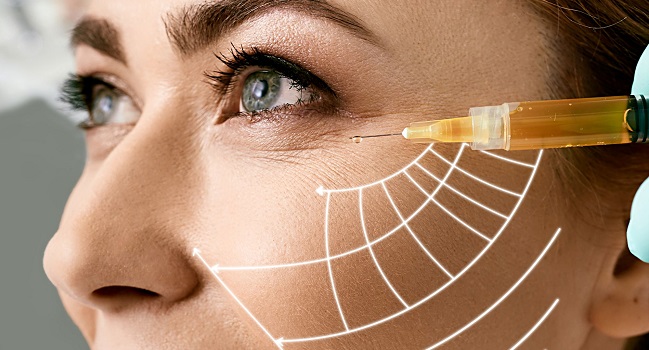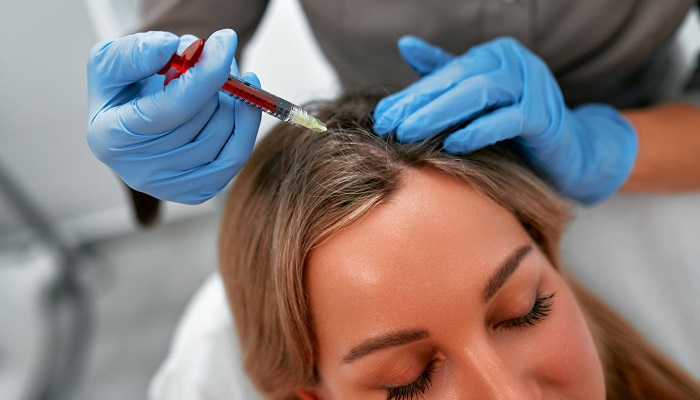As our understanding of the human body and its healing mechanisms advances, therapeutic modalities like Platelet-Rich Plasma (PRP) injections have gained increasing prominence across various medical fields. This innovative approach taps into the body’s innate healing potential, which may be useful in various medical applications.
PRP is produced when blood extracted from the patient is centrifuged or spun at speeds high enough to separate the blood’s components into three layers: red blood cells at the bottom, white blood cells, platelets in the middle (known as the ‘buffy coat’), and plasma (the liquid component of blood) at the top.
Depending on the procedure or the specific PRP preparation protocol, the provider might add an activating agent to the PRP to trigger the platelets, causing them to release their growth factors. Certain PRP kits utilize fibrin polymerization, known as PRFM, the latest progression in this treatment, guaranteeing the platelets’ best concentration, survival, and sustained release.
Platelets are known for their role in clotting. But they also release growth factors and cytokines, proteins that aid in cell communication and vitality.
This is why PRP is often referred to as an anti-aging serum. It is then injected into an injured area of the body, like a tendon, ligament, muscle, or joint, where it may stimulate tissue recovery by boosting cell proliferation, differentiation, angiogenesis (formation of new blood vessels), and attraction of stem cells to the site of injury.
This substance is not as esoteric as it sounds. Here are some of its most common medical applications:
1. Orthopedics
PRP injections have revolutionized orthopedic treatments, especially in sports medicine. They treat many acute and chronic musculoskeletal injuries, including tendon injuries, ligament sprains, and muscle strains. PRP fosters tissue healing, diminishes inflammation and pain, and expedites recovery.
2. Aesthetic Medicine
In cosmetic dermatology, PRP is a natural alternative to synthetic fillers. Famously known as the ‘vampire facelift,’ it revitalizes the skin by boosting collagen production, enhancing skin texture, diminishing wrinkles, and adding volume.
3. Hair Loss Treatment
PRP has shown promise in treating hair loss, particularly androgenetic alopecia, also known as male or female pattern baldness. When injected into the scalp, the increased levels of growth factors can stimulate hair follicle activity and promote new growth, offering a potential treatment option for those struggling with hair loss.
4. Wound Healing
PRP has demonstrated enormous potential in managing difficult-to-heal wounds, such as diabetic ulcers. By introducing a high concentration of growth factors to the wound, the serum may expedite wound healing and tissue regeneration while lowering the risk of infection.
5. Dental And Oral Surgery
PRP is used in various procedures in dentistry, such as dental implant surgery, bone grafting, and periodontal therapy. The growth factors in PRP promote bone regeneration, aid in soft tissue healing, and decrease post-operative pain and swelling.
6. Ophthalmology
Emerging evidence points towards the potential benefits of PRP in treating ocular surface disorders. PRP eye drops have been used in managing conditions like dry eye syndrome, corneal ulcers, and post-refractive surgery, aiding in epithelial healing and reducing symptoms.
7. Pain Management
PRP therapy offers a promising alternative to conventional treatments for chronic pain conditions. Experts have used it in managing osteoarthritis, particularly knee and hip joints, by reducing pain, improving joint function, and possibly delaying disease progression.
8. Neurosurgery
Early research suggests PRP may assist in nerve regeneration, providing possible benefits in neurosurgical applications. While studies are still developing, it’s a promising field that warrants further investment.
9. Cardiac Surgery
The role of PRP in promoting wound healing and tissue regeneration has led to an interest in its application in cardiac surgery. Preliminary studies suggest an ability to aid myocardial repair following ischemic injury.
While PRP therapy has shown interesting results across these applications, it’s vital to note that the science is still evolving. The effectiveness can vary based on preparation techniques, concentration, and individual patient factors. As it is now, it must be considered part of a comprehensive treatment plan rather than a standalone therapy.
Takeaways
In summary, PRP therapy is a powerful tool in modern medicine that harnesses the body’s natural healing mechanisms. Its applications are extensive and continually expanding, transforming the treatment landscape across numerous medical fields.

Still, more high-quality research is needed to understand the mechanism fully and to establish the standard protocols for its use. The effectiveness of PRP might depend on factors like the area of the body being treated, the overall health of the patient, and the specific method and concentration of the PRP injection.
Should it be your choice of treatment? Consult experts first to weigh all of the options.


















